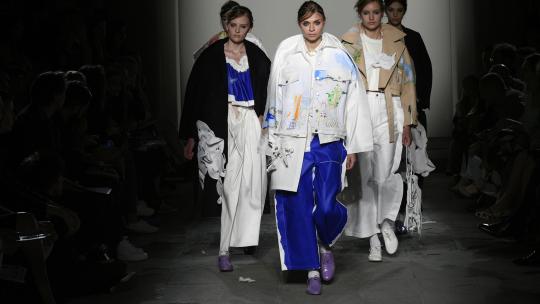![[SEO] maroquinerie de luxe](/sites/supdeluxe.com/files/styles/img_style_19_7_480/public/images/laura-chouette-R2DDxvSNxkM-unsplash.jpg?itok=olF7Wffo)
The rise of second-hand luxury leather goods
The distinctive features of French luxury leather goods
French leather goods are distinguished by their exceptional craftsmanship, inherited from a long tradition of savoir-faire.
Goyard, in particular, is a French leather goods brand that stands out for its heritage of craftsmanship and commitment to exclusivity. Unlike some of the more high-profile brands, Goyard maintains a low-key approach, prioritising craftsmanship and quality over notoriety.
Goyard is famous for its distinctive herringbone pattern, used on a range of products including bags, luggage and accessories. Each piece is handmade by skilled craftsmen and the brand deliberately limits its distribution, giving its products a much sought-after rarity and exclusivity.
Renowned fashion houses invest in artisanal techniques that preserve the quality and authenticity of their products. The result is unique pieces, meticulously designed to satisfy the most demanding tastes. French leather goods emphasise the use of the highest quality materials, guaranteeing exceptional durability.
New customers for luxury French leather goods
A significant transformation is taking place in the landscape of buyers of French luxury leather goods. Artisan leatherworkers are turning their attention to Asia, where a growing middle class is developing a growing interest in high-quality products. Leather goods brands are adapting their strategies to meet Asian cultural preferences while maintaining their commitment to French craftsmanship. This geographical expansion is opening up new opportunities for fashion houses, broadening their customer base.
Luxury craftsmen focus on Asia
Recently, leather craftsmen have moved beyond targeting the traditional European market. Asia has become a key destination for French leather goods, with growing demand for iconic, high-quality products. Brands are forging strategic collaborations, fusing Parisian chic with Asian aesthetics to create unique pieces. This dynamic is redefining the luxury map, and reflects the increasing globalisation of the high-end leather goods industry.
Indeed, like Longchamp, which embodies Parisian elegance on an international scale, certain brands are enjoying significant success, particularly in Asia, where they are succeeding in fusing their historic prestige with local aesthetic trends. Longchamp has also expanded its market by opening boutiques in Hong Kong, Tokyo, Shanghai and Singapore.
Second-hand luxury leather goods: the new consumer trend among young people
There has also been a significant change in consumer habits in recent years, particularly among the younger generation. Second-hand luxury leather goods are emerging as a preferred option, offering a more affordable alternative while preserving the prestige associated with famous brands. Environmentally conscious consumers are embracing this new consumer trend, contributing to the sustainability of the luxury leather goods industry.
The societal impact of this development
As well as redefining luxury, the move towards second-hand leather goods has a major societal impact. It encourages circularity and minimises the industry's ecological footprint. Young buyers see the purchase of vintage luxury goods as a way of helping to preserve the environment while cultivating their distinctive style and investing in unique pieces. This transformation towards more responsible consumption underlines the growing power of customers who are becoming true collectors, guiding the industry towards sustainable practices.

